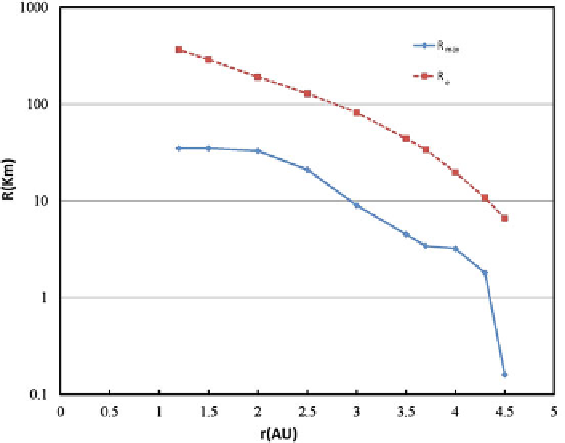Geoscience Reference
In-Depth Information
Fig. 10.3
Comparisons of the size of the diamagnetic cavity (
R
max
) and the location of the electron
temperature discontinuity (
R
e
), respectively, at different heliocentric distances of comet 67P
10.3
Ion Pile-Up Region
The exact profile of the magnetic field ahead of the diamagnetic cavity is determined
by a number of factors. The spatial and temporal variations of the draped interplan-
etary magnetic field (IMF) could lead to the formation of thin current sheets and
probably flux ropes also. A case in point is the so-called ion tail disconnection
events. It was suggested that encounter of a cometary ionosphere with the sector
boundary of the IMF where the magnetic polarity reverses by 180
ı
could lead to
magnetic reconnection and hence the detachment of the “old” ion tail from the
cometary coma (Niedner and Brandt
1978
;Yietal.
1994
).
Other mechanisms such as plasma instabilities generated by interaction with
solar wind events (i.e., CMEs) have also been investigated (Ip and Mendis
1978
;
Wa n g
1991
;Wegmann
2000
;Voelzke
2005
). Small-scale structures like the for-
mation of ion rays could also be related to solar wind disturbances (Bonev and
Jockers
1994
). Based on the detection of an ion pile-up region at comet Halley by the
plasma instruments of the Giotto spacecraft (Balsiger et al.
1986
) and its subsequent
interpretation as the signature of a sharp electron temperature discontinuity (from
T
e
100 K to about 10
4
K) in the cometary ionosphere (Ip et al.
1987
; Gan and
Cravens
1990
), it has been proposed (Ip
1994
) that expansion or contraction of the
boundary of the electron temperature discontinuity could also lead to the ion source

Search WWH ::

Custom Search